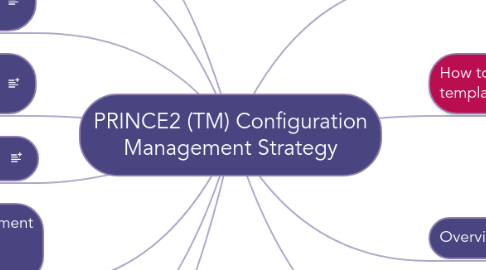
1. Document information
1.1. Project Name
1.1.1. [name]
1.2. Date
1.2.1. [date]
1.3. Release
1.3.1. Draft/Final
1.4. Author
1.4.1. [author]
1.5. Owner
1.5.1. [owner]
1.6. Client
1.6.1. [client]
1.7. Document Number
1.7.1. [number]
1.8. Revision, Approvals & Distribution
1.8.1. Revision History
1.8.1.1. Revision # [....]
1.8.1.1.1. Revision Date
1.8.1.1.2. Previous Revision Date
1.8.1.1.3. Summary of Changes
1.8.1.1.4. Changes Marked
1.8.1.2. Revision # [....]
1.8.1.2.1. Revision Date
1.8.1.2.2. Previous Revision Date
1.8.1.2.3. Summary of Changes
1.8.1.2.4. Changes Marked
1.8.1.3. Revision # [....]
1.8.1.3.1. Revision Date
1.8.1.3.2. Previous Revision Date
1.8.1.3.3. Summary of Changes
1.8.1.3.4. Changes Marked
1.8.1.4. Date of next revision:
1.8.1.4.1. [....]
1.8.2. Approvals
1.8.2.1. Approval # [....]
1.8.2.1.1. Name
1.8.2.1.2. Signature
1.8.2.1.3. Title
1.8.2.1.4. Date of Issue
1.8.2.1.5. Version
1.8.2.2. Approval # [....]
1.8.2.2.1. Name
1.8.2.2.2. Signature
1.8.2.2.3. Title
1.8.2.2.4. Date of Issue
1.8.2.2.5. Version
1.8.2.3. Approval # [....]
1.8.2.3.1. Name
1.8.2.3.2. Signature
1.8.2.3.3. Title
1.8.2.3.4. Date of Issue
1.8.2.3.5. Version
1.8.3. Distribution
1.8.3.1. Distribution # [....]
1.8.3.1.1. Name
1.8.3.1.2. Title
1.8.3.1.3. Date of issue
1.8.3.1.4. Version
1.8.3.2. Distribution # [....]
1.8.3.2.1. Name
1.8.3.2.2. Title
1.8.3.2.3. Date of issue
1.8.3.2.4. Version
2. Overview
2.1. Purpose
2.1.1. A Configuration Management Strategy is used to identify how, and by whom, the project’s products will be controlled and protected. It answers the questions:
2.1.1.1. How and where the project’s products will be stored
2.1.1.2. What storage and retrieval security will be put in place
2.1.1.3. How the products and the various versions and variants of these will be identified
2.1.1.4. How changes to products will be controlled
2.1.1.5. Where responsibility for configuration management will lie.
2.2. Contents
2.2.1. The Configuration Management Strategy should cover the following topics.
2.2.2. Introduction
2.2.3. Configuration Management Procedure
2.2.4. Issue and Change Control Procedure
2.2.5. Tools and Techniques
2.2.6. Records
2.2.7. Reporting
2.2.8. Timing of Configuration Management and Issue and Change Control Activities
2.2.9. Roles and Responsibilities
2.2.10. Scales for Priority and Severity
2.3. Advice
2.3.1. The Configuration Management Strategy is derived from the: The customer’s quality expectations; Corporate configuration management system (e.g. any configuration management software in use or mandated by the user); Programme Quality Management Strategy and information management strategy (if applicable); The user’s quality management system; The supplier’s quality management system; Specific needs of the project’s product(s) and environment; Project management team structure (to identify those with configuration management responsibilities) and Facilitated workshops and informal discussions.
2.3.2. A Configuration Management Strategy can take a number of formats, including: Stand-alone document or a section in the Project Initiation Document; Entry in a project management tool.
2.3.3. The following quality criteria should be observed:
2.3.3.1. Responsibilities are clear and understood by both user and supplier
2.3.3.2. The key identifier for the project’s product(s) is defined
2.3.3.3. The method and circumstances of version control are clear
2.3.3.4. The strategy provides the Project Manager with all the product information required
2.3.3.5. The corporate or programme strategy for configuration management has been considered
2.3.3.6. The retrieval system will produce all required information in an accurate, timely and usable manner
2.3.3.7. The project files provide the information necessary for any audit requirements
2.3.3.8. The project files provide the historical records required to support any lessons
2.3.3.9. The chosen Configuration Management Strategy is appropriate for the size and nature of the project
2.3.3.10. Resources are in place to administer the chosen method of configuration management
2.3.3.11. The requirements of the operational group (or similar group to whom the project’s product will be transitioned) should be considered.
3. Records
3.1. [Definition of the composition and format of the Issue Register and Configuration Item Records]
4. Introduction
4.1. [State the purpose, objectives and scope, and identify who is responsible for the strategy]
5. How to use this template
5.1. How to share this template with your team
5.1.1. Send an email
5.1.1.1. 1. Click Share this map
5.1.1.2. 2. Select Invite People
5.1.1.3. 3. Write a message
5.1.1.4. 4. Click Invite
5.1.2. Send a link
5.1.2.1. 1. Click Share this map
5.1.2.2. 2. Tick Link to share
5.1.2.3. 3. Copy the link to share it
5.1.3. Export
5.1.3.1. 1. Click down arrow, bottom right
5.1.3.2. 2. Select the export option you want
5.2. How to complete this template
5.2.1. Complete the sections in square brackets
5.2.1.1. [....]
5.2.2. Read these sections for help on the PID
5.2.2.1. Purpose
5.2.2.2. Advice
5.2.3. Navigate using the links in Contents
5.2.3.1. Contents
5.3. Attribution
5.3.1. Copyright © AXELOS Limited 2009. All rights reserved. Material is reproduced with the permission of AXELOS
